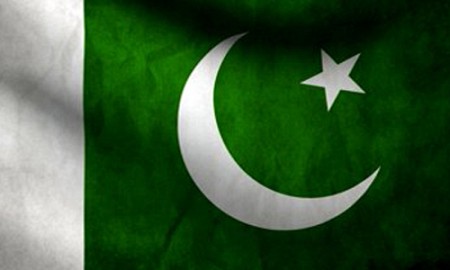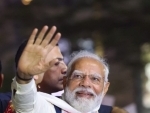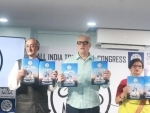
Sindh: Fear's Frontrunner
Terrorists have long been involved, in incidents of bank robbery in Karachi. In one such incident, SIU arrested Syed Islam alias Aziz Jan, the 'deputy chief' of Tehreek-e-Taliban Pakistan (TTP)-Punjab Chapter (also known as the Punjabi Taliban), on February 24, 2014, for his involvement in bank robberies. During interrogation, Islam confessed to robbing PKR 1.7 million from a private bank in Korangi No. 5 on January 7, 2014, and murdering two security guards in the process.
A total of 11 bank robberies were recorded in provincial capital Karachi through 2015.
On January 29, 2016, an encounter took place between TTP militants and Police in the Rizvia Society of Liaquatabad Town in Karachi District. Though no casualties were reported, Police arrested six TTP militants and also found an Improvised Explosive Device (IED) planted on a motorcycle. After being tipped off about the presence of terrorists, the Sindh Rangers conducted a raid at the hideout and, in the ensuing shootout, injured three terrorists who later succumbed to their injuries. The Rangers recovered weapons from the hideout.
According to partial data compiled by the South Asia Terrorism Portal (SATP), Security Forces (SFs) have already killed 19 militants in 2016 (data till February 14). Karachi accounted for 310 militant fatalities through 2015; and another 318 in 2014.
There has been one SF fatality in 2016 (till February 14). SFs lost 58 of their personnel in 2015 as against 128 in 2014. Indeed, the success rate of the SFs against militants has improved considerably. While the ratio of SF to militants killed stood at 1:2 in 2014 it declined significantly to 1:5 in 2015.
Amidst the continuing violence in Karachi, the Federal Cabinet, on September 4, 2013, empowered the Sindh Rangers to lead 'targeted action' with the support of the Police, against criminals involved in the "four heinous crimes of target-killing, kidnapping, extortion and terrorism". The operation began on September 5. According to a report released by the Pakistan Rangers in Sindh on December 29, 2015, at least 4,074 suspected criminals/terrorists had been arrested during 2,410 raids and operations through 2015. Of these, 2,198 were formally handed over to the Police for prosecution, including 887 terrorists, 268 target killers, 97 extortionists and 49 kidnappers.
Despite SFs registering these operational successes, Karachi remained the most violent District across Pakistan in terms of civilian fatalities, with 281 civilians killed in 2015. Quetta, the provincial capital of Balochistan, was the second worst-affected region, accounting for 66 civilian fatalities in 2015.
According to SATP data, Sindh recorded 718 total fatalities, including 350 civilians, 310 militants and 58 SF personnel in 2015, ranking it the second worst region across Pakistan, after the Federally Administered Tribal Areas (FATA), which recorded a total of 1,882 fatalities, including 134 civilians, 106 SF personnel and 1,642 militants. Sindh recorded the highest number of civilian fatalities in 2015. Balochistan, with 247 civilian fatalities, was the second worst.
While Karachi accounted for an overwhelming proportion of terrorist violence in Sindh, other Districts were not entirely free of the menace. Thus, of the total of 718 terrorism-related fatalities in Sindh through 2015, at least 640 (82.05 per cent) were registered in Karachi alone, followed by 63 in Shikarpur District, six in Sukkur, two in Dadu, and one each in Ghotki, Jamshoro, Khairpur, Jacobabad, Thatta, Hyderabad and Shaheed Benazirabad. Fearing a spill-over of violence into other parts of the Province, Sindh Chief Minister Syed Qaim Ali Shah, had cautioned, on February 24, 2014, "Karachi-like terrorism must not hit other parts of Sindh. Terrorism should not make its way into the interior of Sindh with the intensity witnessed in Karachi."
Significantly, the worst terrorist attack in the Province in 2015 took place in Shikarpur District. On January 30, 2015, at least 61 Shias were killed and more than 50 were injured in a bomb attack on Karbala-e-Moalla Imambargah (Shia place of commemoration) in the Lakhidar area of Shikarpur District. Ahmed Marwat, 'spokesman' of Jundullah, a splinter faction of TTP, which had pledged allegiance to Islamic State (IS, also known as Islamic State in Iraq and Syria, ISIS or Daesh) on November 12, 2014, had claimed responsibility for the attack.
In another sectarian attack, on October 23, 2015, at least 22 persons, including eight children, were killed and 40 were injured, in a suicide attack targeting a Muharram(Shia mourning for the martyrs of Karbala) procession in the Lashari area of Jacobabad District. Shikarpur and Jacobabad are now threatened by the spectre of sectarian violence. Before 2015, sectarian attacks were geographically limited to Karachi.
Sectarian fatalities in Sindh saw an increase of 90.69 per cent in 2015 over 2014, though the number of incidents declined. A total of 164 people were killed in 30 sectarian attacks in 2015, compared to 86 killed in 52 such incidents in 2014.
In addition to the Shikarpur incident, the second worst sectarian attack was reported in Karachi. On May 13, 2015, at least 45 Ismaili Shias were killed and another 24 were injured when unidentified militants opened fire on their bus in the Safora Chowrangi area near Dow Medical College in Gulshan-e-Iqbal Town. Two separate, though ideologically interlinked, terrorist outfits claimed responsibility for the attack. A group calling itself Khorasan Province Islamic State claimed responsibility for the attack. Jundullah also claimed responsibility for the attack, declaring, "These killed people were Ismaili and we consider them kafir (non-Muslim). We had four attackers. In the coming days we will attack Ismailis, Shias and Christians." Both groups have declared allegiance to the Islamic State (IS or Daesh).
The situation worsened in some measure because of the varying presence of a wide range of sectarian-terrorist outfits operating in collusion with each other across the Province. These prominently include TTP, LeJ, Sipah-e-Sahaba-Pakistan (SSP), Jundullah, Jaish-e-Mohammad (JeM), Sunni Tehreek (ST), Sipah-e-Muhammad Pakistan (SMP) and, more recently, the Khorasan Province Islamic State. While briefing the media on February 11, 2016, the Director General (DG) Inter Services Public Relations, Lieutenant General Asim Bajwa also disclosed that al Qaeda, and subsequently its subsidiary, al Qaeda in the Indian Subcontinent (AQIS) and Lashkar-e-Jhangvi, in collusion with TTP, had also been involved in major terror incidents in Karachi since 2009.
The emergence of the IS in Sindh and its overlap with other domestic terrorist formations is worrying agencies. Aftab Sultan, Pakistan Intelligence Bureau (IB) Director General (DG), on February 10, 2016, informed the Senate Standing Committee (SSC) on Interior that IS was emerging as a threat in the country because several militant groups had soft corner for it. He named LeJ and SSP as examples.
Similarly, confirming the active presence of IS in Karachi, Ghulam Hyder Jamali, Inspector General of Police (IGP), Sindh, on October 12, 2015, noted that the group was operating in the Province and had established links with anti-Shia outfit LeJ. He further revealed that that IS and LeJ were involved in the May 13, 2015, Safoora Goth carnage on Ismaili Shias, that first demonstrated the sudden emergence of IS in Karachi. At least 43 Shias were killed in the incident.
The number of bomb attacks in the Province declined, though fatalities resulting from these attacks increased. Sindh recorded a total of 26 incidents of bomb blasts with 102 fatalities in 2015, compared to 72 such incidents with 61 fatalities in 2014.
Targeted political killings also continued through 2015. At least 20 politicians, including 17 of the Muttahida Qaumi Movement (MQM), two of the Pakistan People's Party (PPP) and one from the Awami National Party (ANP), were killed in 2015 alone. 46 politicians, including 30 from MQM, and eight each of ANP and PPP, were killed in targeted political killings in 2014. PPP, MQM and ANP have been the principal targets over the years, with at least 411 activists of these parties, including 238 of MQM, 107 of ANP, and 66 of PPP, killed since 2011.
Turf wars between two prominent criminal gangs, the Uzair Baloch-led People's Amn Committee (PAC, People's Peace Committee) and the Ghaffar Zikri-led Lyari gang, and their multiple local wings, are another aspect of the endemic violence in Karachi. Despite being banned, these criminal formations continue to operate with the support of their political patrons. The PAC is alleged to be supported by PPP and the Zikri group operates in collusion with MQM. The two groups, residing and operating in Lyari Town, the oldest neighbourhood of Karachi, wreaked havoc in the country's commercial capital, with their internecine gang wars, rampaging extortion, widespread targeted political killings and the building of a drug economy. These have led to a spike in violence in Lyari and surrounding areas, making Lyari the most violent of all18 Towns in Karachi. In 2015 Lyari recorded a total of 90 killings, including 23 civilians, two SF personnel and 65 militants. The second most violent area was Gulshan Town, recording a total of 78 fatalities, including 65 civilians (including the 43 killed in the Safoora Goth carnage), eight SF personnel and five militants.
In a related development, the Sindh Rangers claimed to have arrested Uzair Baloch, leader of the Lyari gang and chief of the proscribed PAC, in a 'targeted action' on the outskirts of Karachi, on January 30, 2016. Rangers arrested Baloch while he was attempting to enter the city, according to a Press Release issued by the paramilitary force. The Release also claimed the recovery of weapons from Baloch. His family members, however, claimed that Baloch was arrested by Interpol at the boarding lounge of Dubai airport on December 27, 2014, and the SFs, after keeping him in illegal detention since then, declared his arrest onDecember 27. Baloch reportedly fled Karachi soon after the launch of the ongoing 'targeted action' in Karachi on September 5, 2013. It was alleged that Uzair worked under the patronage of PPP. The Sindh Government banned PAC in April 2012 and announced a bounty of PKR two million on Uzair.
Evidently, despite a sharp decline in terrorism-related fatalities, the security situation in Sindh at large and Karachi in particular remain worrisome. On January 29, 2016, Prime Minister Nawaz Sharif reiterated that the Karachi Operation would continue till its 'logical conclusion'. Extending the assessment to the rest of Pakistan, he expressed Government's resolve, declaring, "War against terror will continue till elimination of last terrorist. Eliminating the menace of terrorism and ensuring a peaceful Pakistan for our future generations is the top most priority of PML-N Government and our successes against terrorism and achieving economic stability have created a new hope in people."
As a result of the cumulative impact of multiple patterns of violence, including Islamist terrorism, political killings and gang wars, Karachi features on the World's Deadliest Cities index, ranking 16 in a list of 64 cities from around the world that are at an "extreme risk" of terror attacks, according to Global Alerts Dashboard (GAD), an online mapping and data portal that logs and analyses every reported terrorism incident worldwide. The trend since 2011 , indicates that Karachi, the commercial capital of Pakistan, has become a bellwether of violence in the country.
Support Our Journalism
We cannot do without you.. your contribution supports unbiased journalism
IBNS is not driven by any ism- not wokeism, not racism, not skewed secularism, not hyper right-wing or left liberal ideals, nor by any hardline religious beliefs or hyper nationalism. We want to serve you good old objective news, as they are. We do not judge or preach. We let people decide for themselves. We only try to present factual and well-sourced news.







